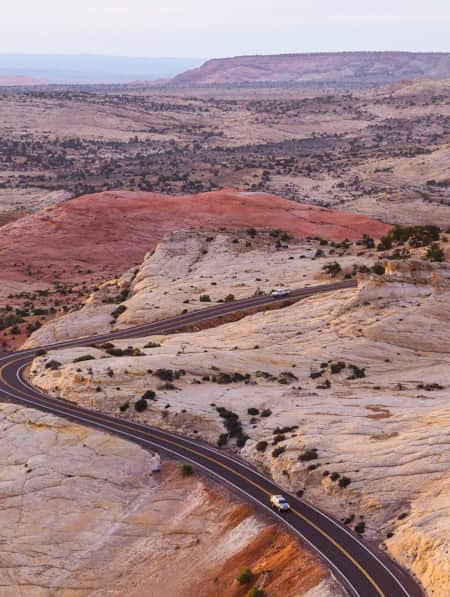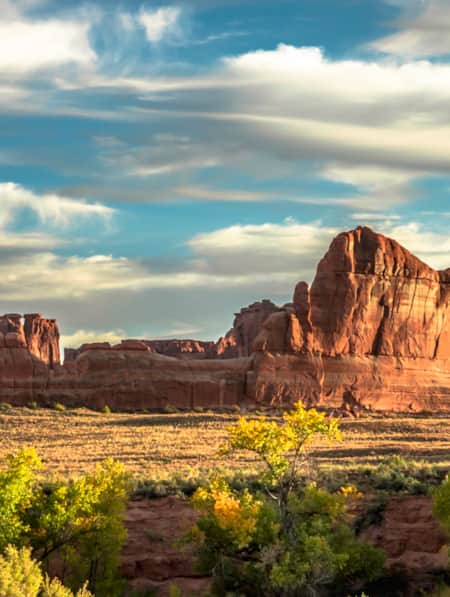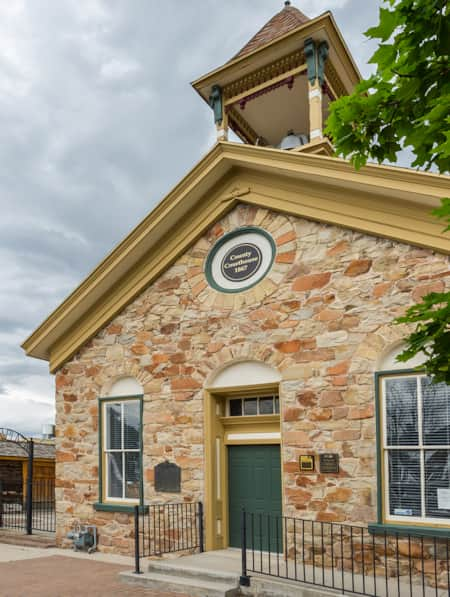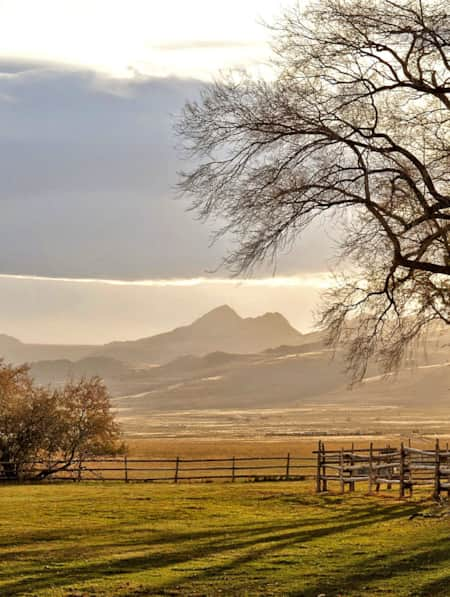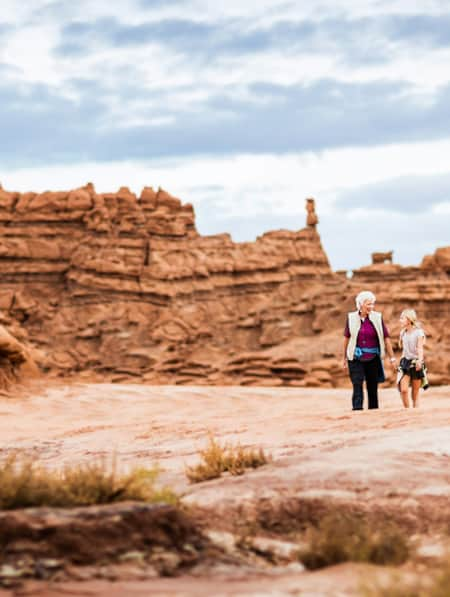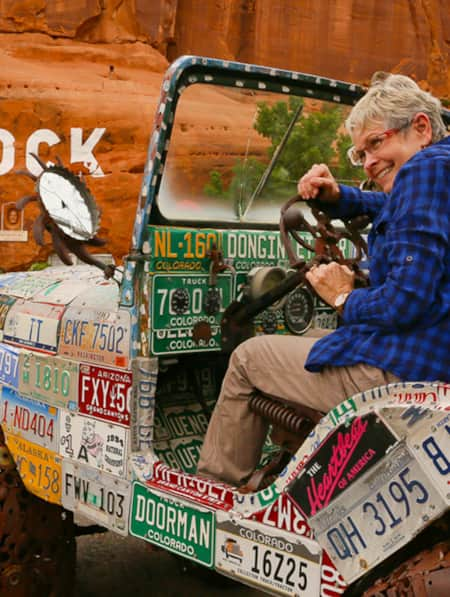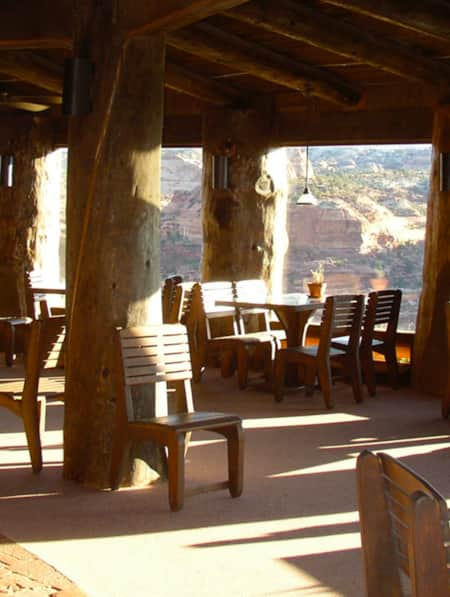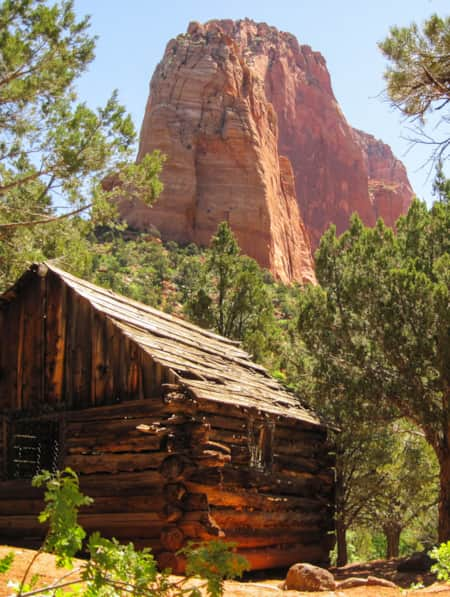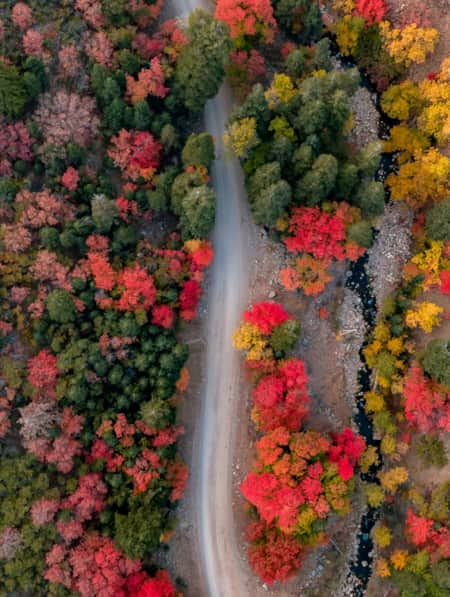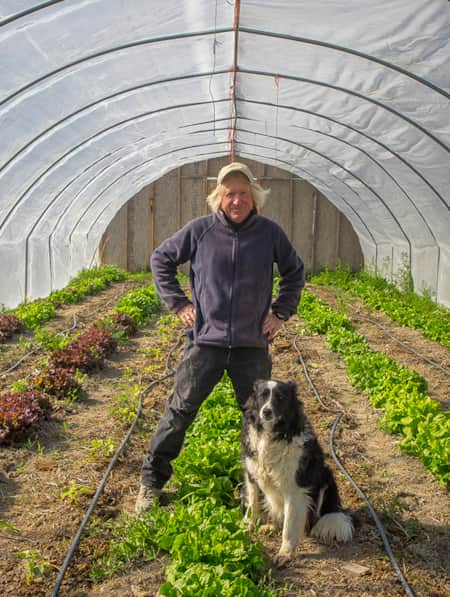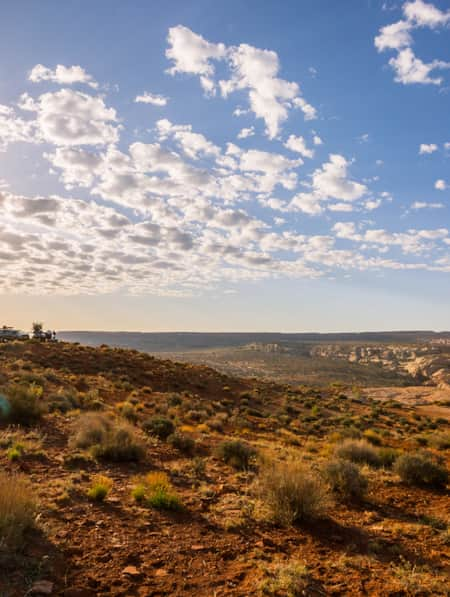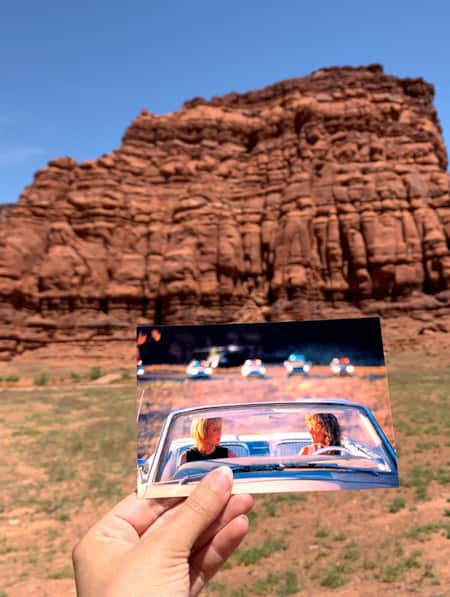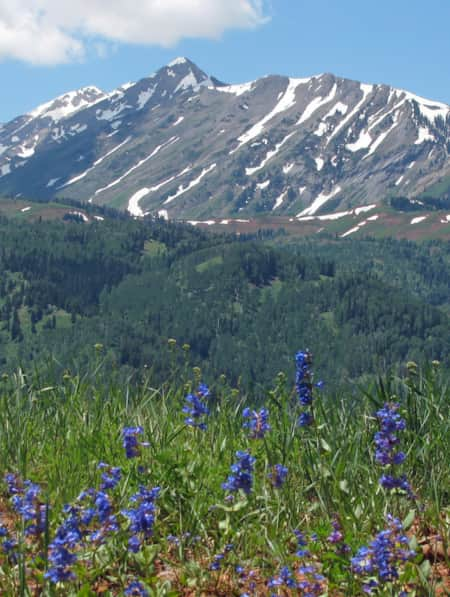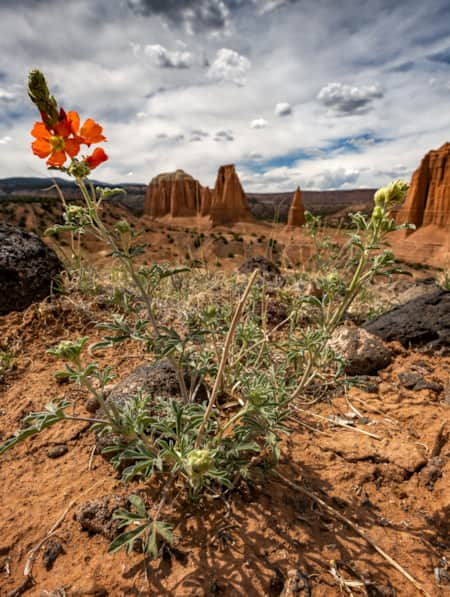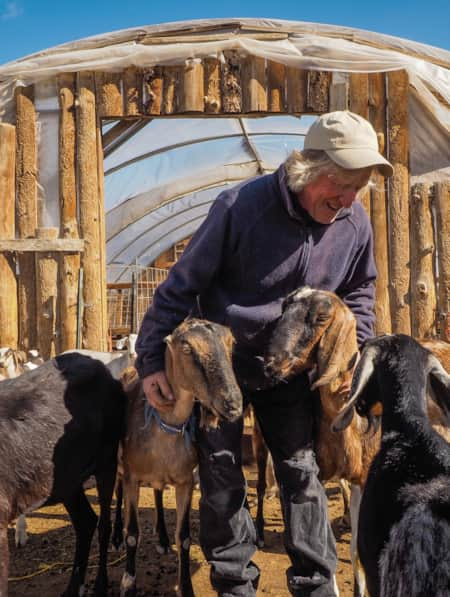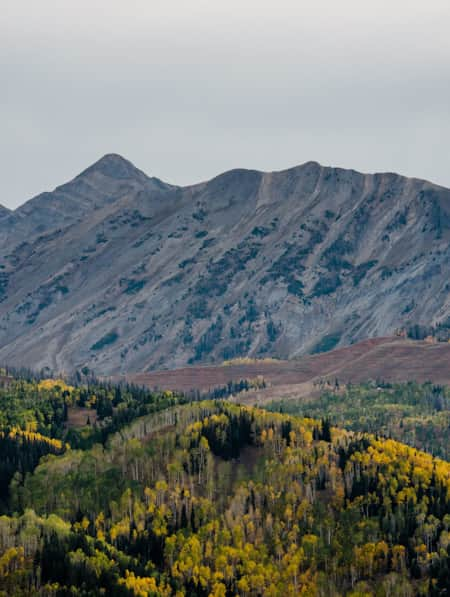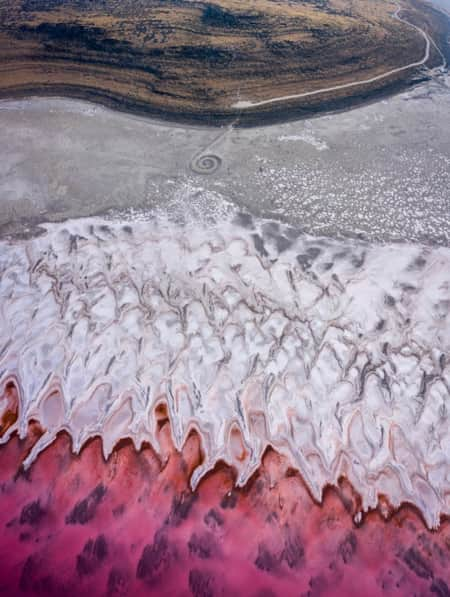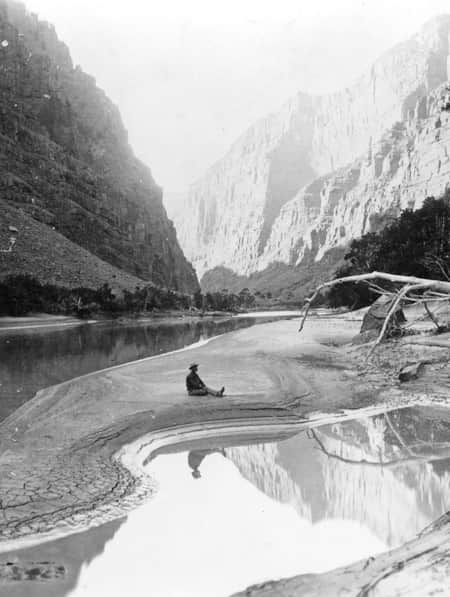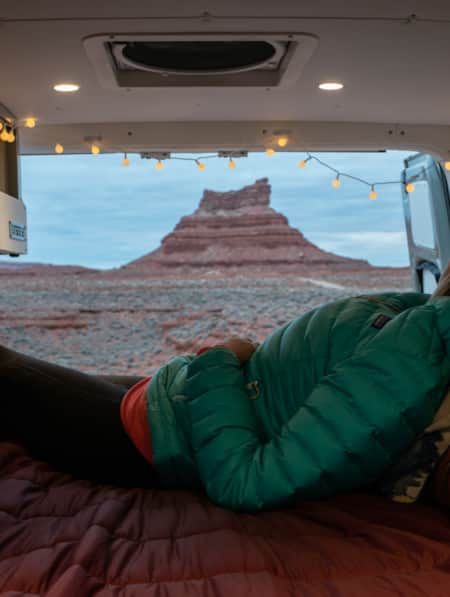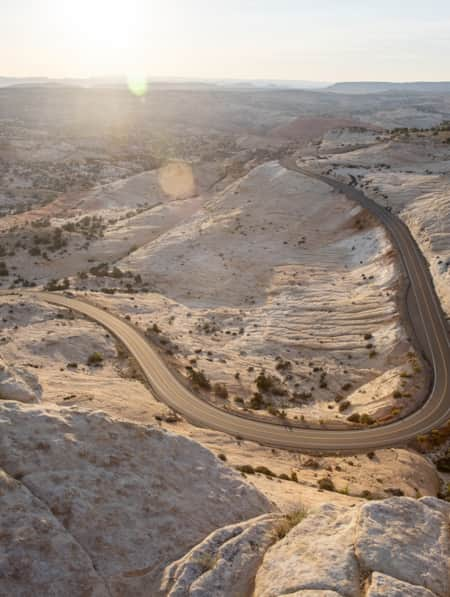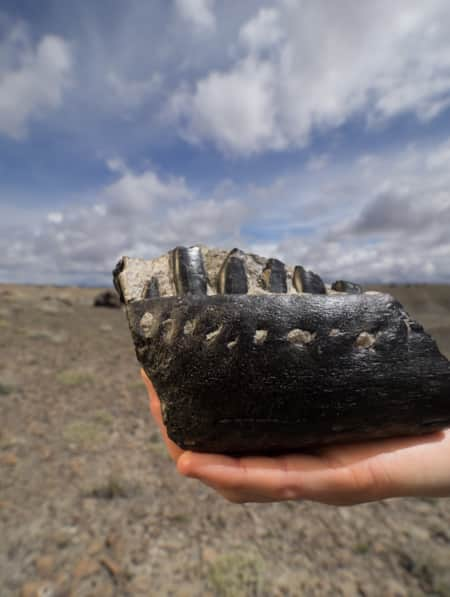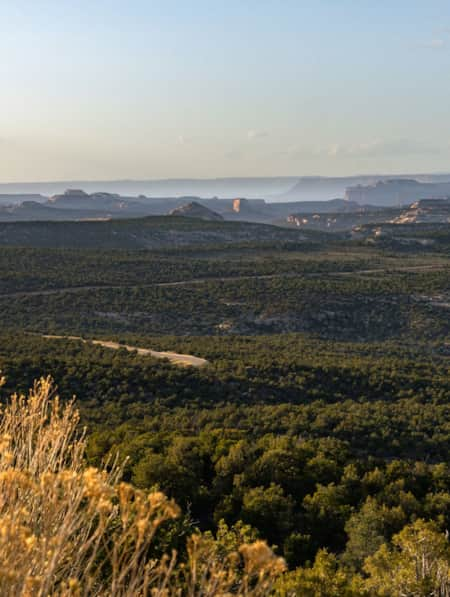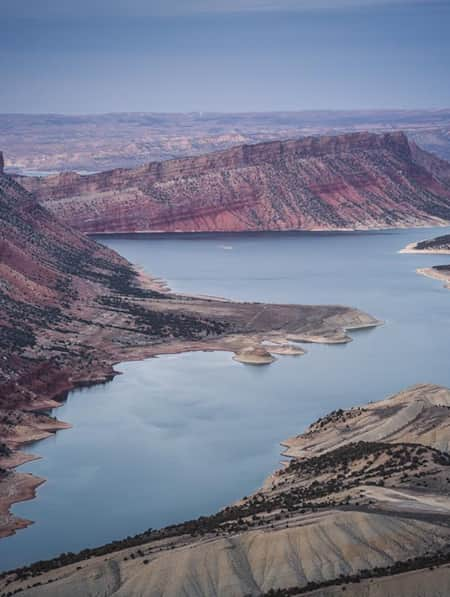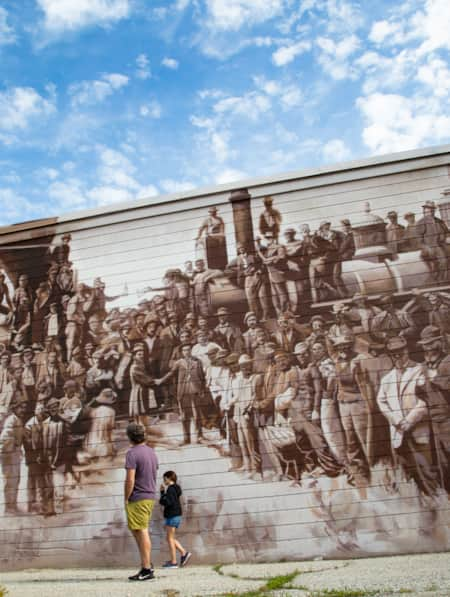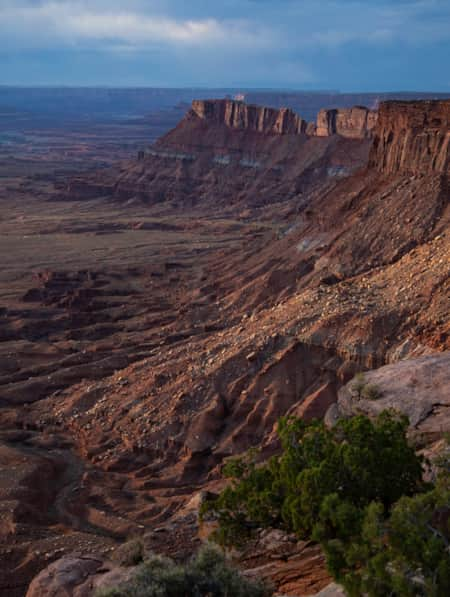Touring the Indian Creek Corridor Scenic Byway
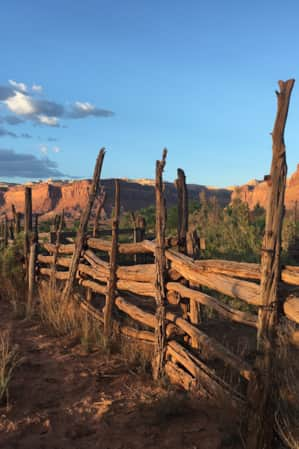
Driving down Indian Creek Corridor Scenic Byway (S.R. 211), en route to The Needles District of Canyonlands National Park, I kept having to pull over to admire the scenery. I was mesmerized as distant clouds shifted and drifted above the mesa tops and buttes. The breaking sun transformed the red rock below and I was captivated by the dancing shadows and light.
I was going to spend a few days exploring The Needles District of Canyonlands, but first, I wanted to explore the byway that leads to the district.
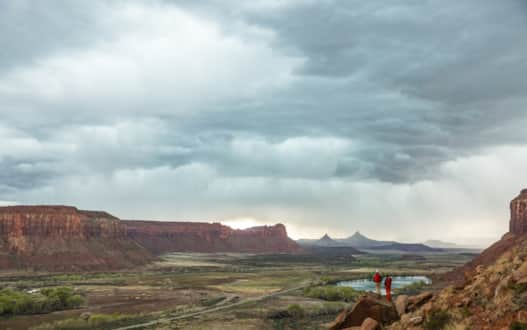
Photo: Andrew Burr
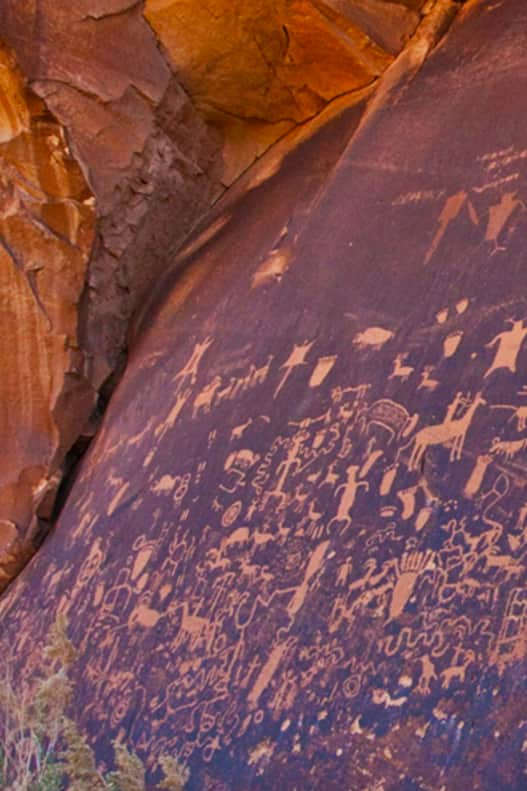
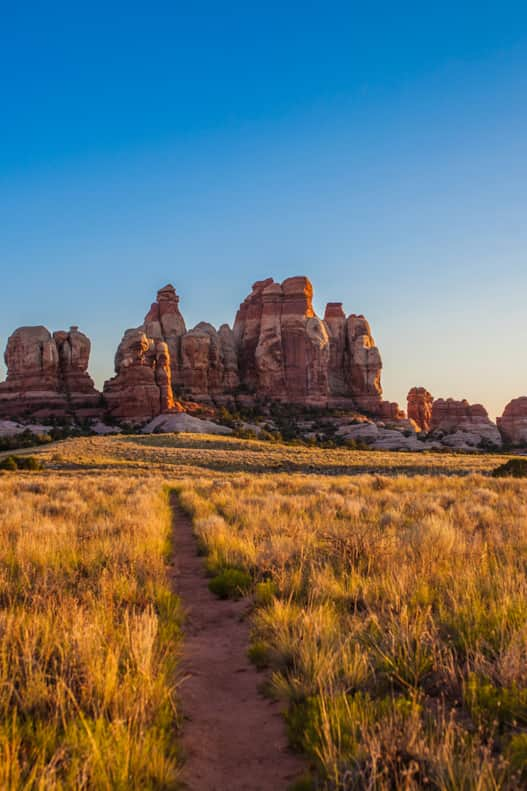
After watching some wild turkeys on the side of the road, I came across Newspaper Rock, a petroglyph panel that of such renown it was listed on the National Register of Historic Places long before either Bears Ears National Monument or Indian Creek added prominence to the remote corner of Utah. The landmark is covered with images of animals, people, ancient symbols and depictions of the natural world painstakingly etched into the rock by peoples from the Fremont, Ute and Ancient Puebloan (Anasazi) Native American tribes. It’s surmised that the perennial natural spring attracted ancients to this distinctive area of Utah.
The sign at the site indicates modern day scholars aren’t quite sure what many of the images mean. As I looked at the panel, I drifted off in thought, wondering who made these designs and what they wanted to communicate.
A Landscape for Conservancy
Continuing down the road, I admired the spans of wide open land on both sides of the road. Later I learned that much of this land is The Nature Conservancy’s Dugout Ranch. The ranch contains 5,200 acres of private property and upwards of 300,000 acres of associated public grazing allotments. For travelers on the scenic byway, that means views of rugged western landscapes untouched by development, a place that supports an older way of life.
The landscape I pass through on my drive contains 11 rare plant species and is critical habitat for the threatened Mexican spotted owl. The 5,200-acre private ranch also protects 42 miles of streams and associated riparian and streamside vegetation areas, which is crucial in a region where water is scarce yet wildlife relies upon it. The ranch and Nature Conservancy worked to add wayfinding and basic amenities to trailheads for the popular climbing area.
Two nearby mesa tops — Lavender Mesa and Bridger Jack Mesa — are also relatively untouched “relict areas” which are crucial to research.
“These areas show us what these communities of concern would look like without any impacts from humans,” Bellagamba says.
The ranch is also home to the Canyonlands Research Center, which conducts climate change research, including modeling precipitation and temperature patterns, and land-use evaluations. Interested visitors may rent tent cabins for research and educational activities, and with prior approval for other visits.
Most travelers along Utah's Indian Creek Corridor Scenic Byway will simply appreciate The Nature Conservancy and Canyonlands Research Center’s work to protect the landscape from development that would have dramatically changed the area.
Camping at an Outpost of The Needles District
Further down the road, right outside the gate to The Needles District of Canyonlands National Park, sits another Nature Conservancy property: Needles Outpost. (Contact information next to map, below.) When it went up for sale at auction in 2017, a conservation-minded buyer purchased it and transferred the title to the conservancy, which plans on keeping it the way it is today, with a small store and campground.
Heading inside Needles Outpost, I was greeted by two cats — Oscar and Lucy — and a very friendly shopkeeper. I strolled through the store and checked out its offerings. In addition to running a campground onsite, the Outpost's shop sells snacks, drinks, gas, ice and even rents out card and board games as well as movies by the night.
After grabbing a beverage, I headed back out and, after a little more exploring, found a small Bureau of Land Management campground a bit down the road (download the BLM's PDF map; more information at Recreation.gov). Settling in at a site, I cooked some pasta and relaxed as the sun went down.
When twilight turned to darkness, I set up a spotting scope and turned my sights towards the heavens, spying the moon and its craters. When it dipped below the horizon, the darkness of night turned even darker, and the clear night made the Milky Way’s multitudinous pinpricks of light shine even brighter.
And then I saw it: Saturn.
The planet's rings were clearly visible in the clear night sky through the scope. I had never seen them before in real life. I was struck with awe by the fact that I was looking at the rings of Saturn from a little BLM campsite in the red rock desert of Utah.
I couldn’t help but feel like one of the tiniest creatures in the universe at that moment. And one of the luckiest to be gazing up at Saturn's rings from a little spot along the Indian Creek Corridor Scenic Byway. Plan your trip today to experience Utah’s natural splendor.

